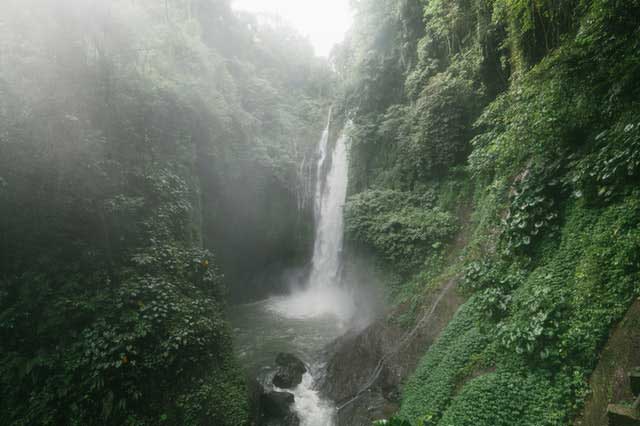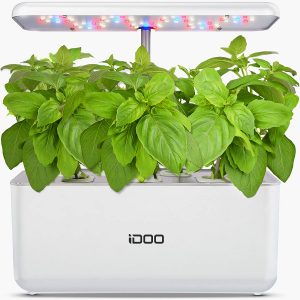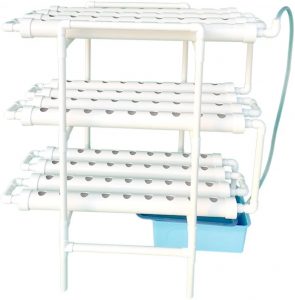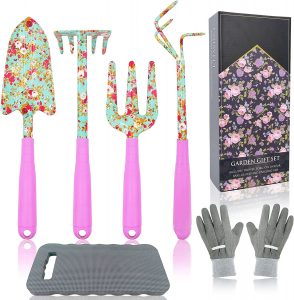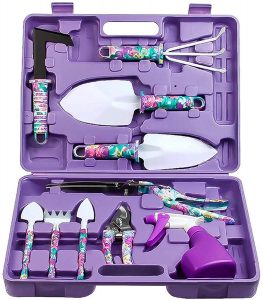The alarming levels of global pollution are hard to ignore, as the destruction of the Rain Forest, the reported holes in the ozone layer, the melting of the glaciers and acid rain are just a few of the most common issues we are constantly reminded of in the media.
The integrity and well-being of our planet is at risk, along with our own health, and the problems triggered by all forms of pollution also reflect on the quality of the soil used in agriculture and the quality of the produce sold worldwide.
Did you know that the top soil is lost at an incredibly fast pace as we speak? If you own a piece of land, no matter how big or small, in your backyard or part of a small family-owned farm in the countryside, you could bring your own contribution towards the improvement of life on Earth through it.
Curious to learn how? It is called conservation gardening and it refers to those particular practices used to create a habitat rich in resources for animals and insects that you would like to attract to their land. A conservation garden also features the inclusion of those plants that can offer proper shelter, food, water, and protection against predators.
Let us find out more about conservation gardening and how to use gardening for the environment.
What Is Conservation Gardening?
Conservation gardening refers to the use of certain gardening methods and procedures that do not involve any artificial fertilizers and harmful sprays. Instead, these toxic options are replaced with biological procedures and natural composts. The result is a cleaner garden that you will get to benefit from, along with all the creatures that will be sharing this small space with you.
Once you are capable of creating a safe and healthy habitat for these creatures, you will manage to effectively build a more natural balance. In turn, you will keep predators at bay and manage the pests a lot easier. This means you will no longer need to use toxic anti-pest sprays on your plants.
The Role Of Trees In Conservation Gardening
A conservation garden should feature some newly planted trees, if possible, as well as native ones, plus a combination of trees normally found in a nearby wood. Since these trees will normally take up quite some space in any conservation garden, you may need to focus on some smaller trees for your particular gardening needs.
Keep in mind a tree is essential for any garden as it offers the best habitat for birds, insects, and mammals. A tree’s root can reach deep into the earth and extract water and rich nutrients that would not be able to nurture the garden otherwise.
A tree’s dead leaves can be transformed into leaf mould that can play the role of an amazing soil conditioner. A tree can also extract CO2 from the air and turn it into wood, while giving out O2 and helping us fight global warming.
A tree is also excellent at providing us with nuts, fruits, and leaves that can be eaten, which means you have every reason to plant them and fully enjoy them. Besides, trees are gorgeous and they will add more beauty and charm to any garden, no matter how big or small.z
Ponds and Conservation Gardens
Ponds should also be included on the same list of conservation gardening practices, as they can truly enhance any garden while offering a home to toads and frogs. In turn, they will eat garden slugs and bring their own contribution to the normal functioning of the garden ecosystem. Whether it measures several square feet or more and it is built with the help of old and buried baths or special liners and pre-formed ponds, your pond can look any way you want to. Set up a budget and go from there.
If you are thinking about populating the pond with fish, you might want to think twice about it, if you also plan on hosting amphibians, as the fish will eat the tadpoles and spawn. Instead, you can consider growing numerous edible plants in your pond.
Native and Non-Native Hedges
Conservation gardening would not be complete without a few hedges. They are great at offering shelter and nourishment for a series of creatures. Consider opting for native species as they are more recommended for conservation gardening. Nonetheless, know that mind there are plenty of non-native hedge plants with fruits that could feed you and the birds in your garden all years long, including Rosa Rugosa, Barberries, or Cotoneaster. Some common native hedge plants are Sloe, Hawthorn, Hazel, and Holly.
For more inspiring ideas and examples of good conservation gardening planning, you could get in touch with a local or regional horticultural society. These are organizations that are focused on the study as well as the culture of plants that can be cultivated and there are numerous horticultural societies at a domestic as well as an international level. Some have a more general focus, whereas others are devoted to a particular kind or group of plants They are also clustered.
Grow A Beautiful Lawn
The majority of gardens have lawns seeded with beautiful flowers. Cutting them from August after the seeds have been set will enable you to create a gorgeous habitat for butterflies. You will also need to focus on removing the mowing’s to maintain the fertility of the soil low so you can encourage flowers to grow, while discouraging the growth of grass that is too lush. These mowings are also excellent matter for compost heap. Grow Evening Primrose to feed moths, Oregano to draw in butterflies, fruit shrubs like Barberry Cotoneaster for birds, and native Ivy, the tastiest nectar for bees.
Also, try not to worry too much about maintaining your conservation garden extremely tidy. Dead flower stems also have their charm during the cold season, while the seeds can provide nourishment for birds. Ladybirds can use these the stems for hibernation. Get ready for your conservation garden to start attracting hedgehogs as well.
If you are looking for more landscape design ideas and native and non-native plants to grow in your conservation gardening, you could check out the Conservation Garden Park in West Jordan, Utah, that showcases many wonderful waterside landscaping examples and plenty of interactive exhibits.
Growing a beautiful conservation garden at home is not difficult and it comes with plenty of advantages, so if you are trying to adopt a more sustainable lifestyle, we recommend you give it a go.

